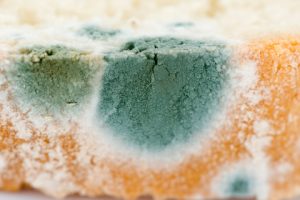Molds produce tiny spores to reproduce. Mold spores waft through the indoor and outdoor air continually. When mold spores land on a damp spot indoors, they may begin growing and digesting whatever they are growing on in order to survive. There are molds that can grow on wood, paper, carpet, and foods.
Should I use bleach to clean up mold?
A solution of one cup of bleach and one cup of water is generally effective on most surfaces.
How can I tell if I have a mold problem?
Black, green, white, or blue spots on ceilings and surfaces are the most common sign of mold in a home. Pay special attention to bathrooms and basements as they are the most likely places to find mold. Problems can also occur in closets.
What are the basic mold cleanup steps?
You should wear rubber gloves when touching mold and never use your bare hands even when cleaning. A solution of one cup of bleach and one cup of water is generally effective on most surfaces. You also must eliminate the source of the moisture so that it does not reoccur. Open windows so that the area can dry; do not put objects on surface until it is completely dried.
What is the difference between Mold and Mildew?
Molds include all species of microscopic fungi that grow in the form of multicellular filaments, called hyphae. Molds can thrive on any organic matter, including clothing, leather, paper, and the ceilings, walls and floors of homes with moisture management problems. Mildew often lives on shower walls, windowsills, and other places where moisture levels are high. There are many species of molds. In unaired places, such as basements, they can produce a strong musty odor.
 How do molds affect people?
How do molds affect people?
Molds produce allergens (substances that can cause allergic reactions), irritants, and in some cases, potentially toxic substances (mycotoxins). Inhaling or touching mold or mold spores may cause allergic reactions in sensitive individuals. Allergic responses include hay fever-type symptoms, such as sneezing, runny nose, red eyes, and skin rash (dermatitis). Allergic reactions to mold are common.
Mildew refers to certain kinds of mold or fungus. The term mildew is often used generically to refer to mold growth, usually with a flat growth habit.


2 Responses
It really helped when you talked about mold and how it could lead to allergic reactions. Recently, my sister said something triggered her allergies while she was cleaning her basement. My sister’s not sure if she has any mold, so I’ll be sure to help her inspect the place and find a mold remediation company. Thanks for the information on mold infestations and their growing conditions.